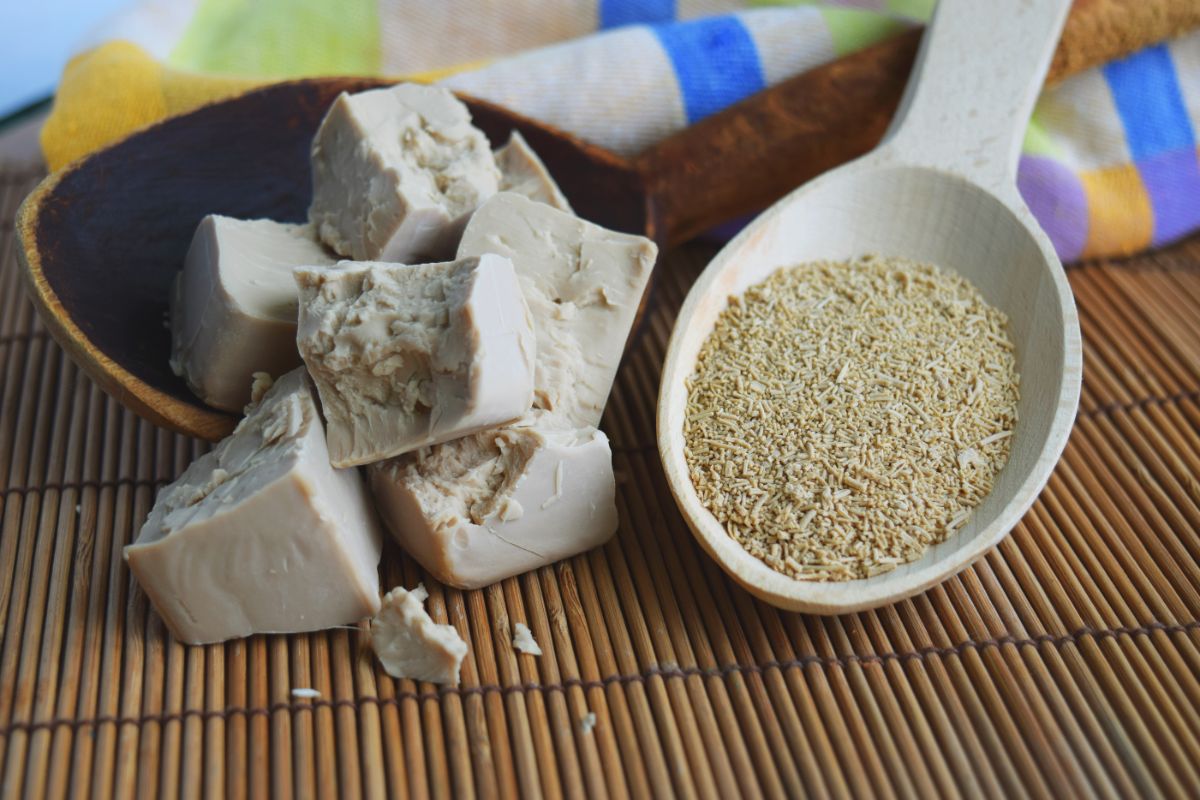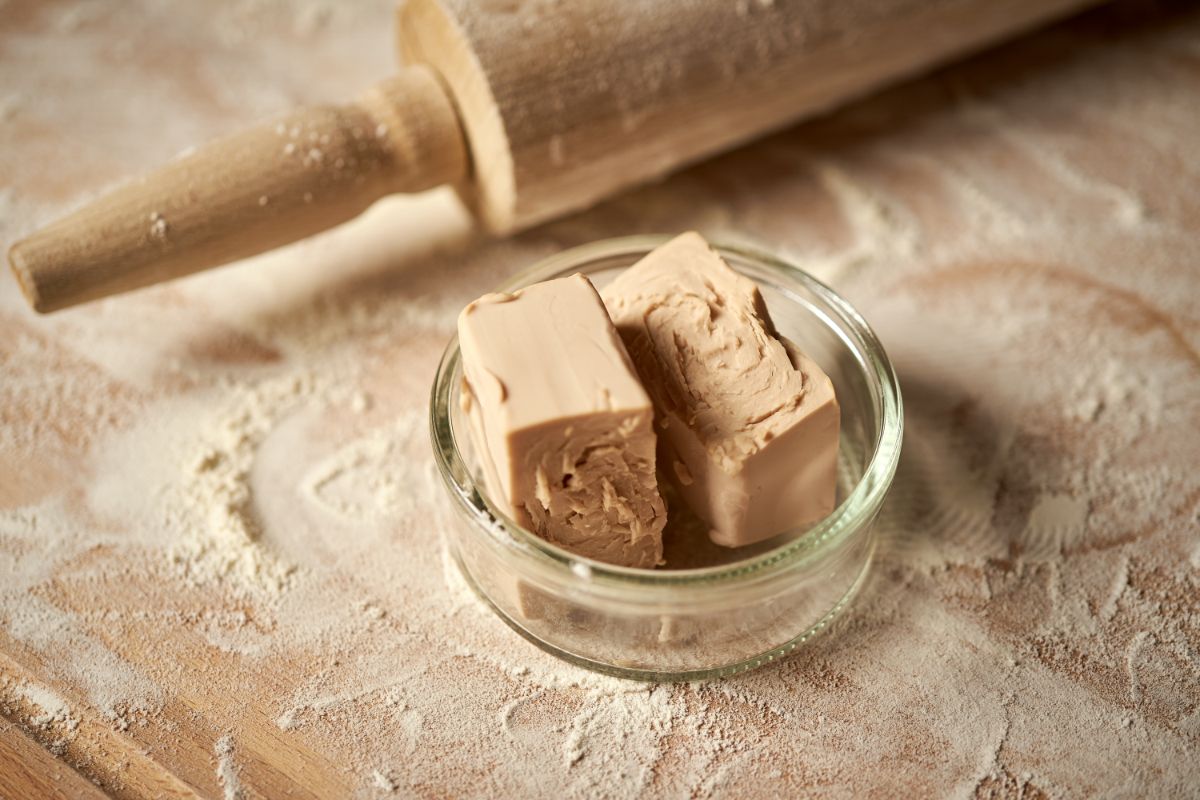If you have boughten a package of yeast a while ago, and it has sat in your cupboard unopened, you may be wondering if it has stopped working. If the packet of yeast is nearing its best-by date listed on the label, you may want to check if the yeast has gone bad.

Some of you may use fresh yeast, but it has sat in the refrigerator for some time, and you’ve now decided to bake a batch of bread.
Knowing if Yeast Has Stopped Working
Traditionally if something has ‘gone bad’ it will appear moldy or perhaps give an off-odor, which will alert you that it is unsafe to eat or use.
But with a yeast product, these signs may not be as obvious, yet it is not effective to use in bread making. If your yeast will not make your bread rise and make it fluffy and soft, then it is of no use to you.
What you want to determine with an older package or jar of yeast is whether or not it has stopped working.
There are ways for you to test your yeast and find out if it is still active and usable. With a package of dry yeast, you can tell if it has gone bad in similar ways you would know if your flour has gone bad.
So, how do you know if the yeast has stopped working? The yeast will appear clumpy and have formed into one large chunk or several small chunks. There may also be signs of organic growth in the package. With fresh yeast, you will notice discoloration, or it will have dried out, and possibly have signs of mold growing on it.
If you see any of these signs, you need to throw the yeast away and head to the store to purchase a new batch. The problem with old yeast is it does not always give off signs that it isn’t going to work for you. If the package is nearing the end of its ‘best by’ date, you should check if the yeast has stopped working before adding it to your bread project.
Testing Yeast to Determine if Still Working
Proofing or checking if your yeast is still working is the same process for dry or packaged yeast as it is for fresh yeast. You will need warm water and sugar to test either of these products.
Most recipes have a proofing process built into the recipe for testing cake or fresh yeast. If it is not included in your method, you can do one yourself.

Begin with a half cup of water that is from 90 to 100 degrees Fahrenheit, and dissolve one teaspoon of sugar in it. Add the fresh yeast to this mixture and allow it to sit for about ten minutes.
After the ten minutes, you should notice a lot of foam-forming, and if not, the yeast has stopped working. If you see a lot of foam-forming, the yeast is still active, and you can proceed to add the remaining ingredients needed for your bread dough.
Remember, during the proofing process, you have added water and sugar, so these amounts will have to be decreased when you continue with the recipe.
If you are proofing dry yeast, you will need a quarter cup of water between 105 and 115 degrees Fahrenheit. Add one teaspoon of sugar to the water and mix well.
Once the sugar is dissolved, you can add one package of dry yeast and allow it to sit for about ten minutes.
After ten minutes, you should notice the mixture beginning to foam. If it foams to about a half cup, you know it is working, and you can continue with it and your bread recipe.
The same is true for dry yeast, and if it is not foaming, you have to throw it away and purchase a new batch.
How Long Can You Keep Yeast Before it Stops Working?
If you use dry yeast in bread baking projects, you will see a ‘best-by’ date on the package. This date is a suggested amount of time that you should keep and use the product.
Generally, products last much longer than this date, and if unopened, you may still use them even if you’ve gone past this time, but you will want to proof them before adding them to your bread project.
If you have opened the package, it should retain its effectiveness for about four months when kept in the refrigerator, or six months if you freeze it. Remember the dates listed on the packages are estimates. Yeast may stop working before it reaches these times.
Fresh yeast is a living organism and is expected to continue working from two to three weeks after its production. Just as the dry yeast can stop working before its ‘best by’ date, so can fresh yeast. Always proof your yeast before adding to a baking project just to ensure it is still working.
Storing Your Yeast
Dry yeast consists of granules in a dormant state. When these packages are unopened, you should store them in a dry, cool area. Room temperature or slightly below is perfect for storing dry yeast packages.
You want to keep them in a cupboard or pantry which is not close to the stove. Once you have opened the packet, you should either freeze or refrigerate it.
If you want your unused yeast to continue working for you, transfer the granules into an airtight container and place in either your freezer or refrigerator.
It has to be sealed as dry yeast is extremely perishable once exposed to heat, moisture, or air. If you place the yeast package into the refrigerator ‘as is’ after opening, moisture from the fridge will get into the packet and make it ineffective in your baking.
Fresh yeast is available in the refrigerated section of your grocery store. It has to remain in the fridge at all times. When using the fresh yeast cake, cut off only the amount called for in your recipe, and keep the remaining portion in the refrigerator.
